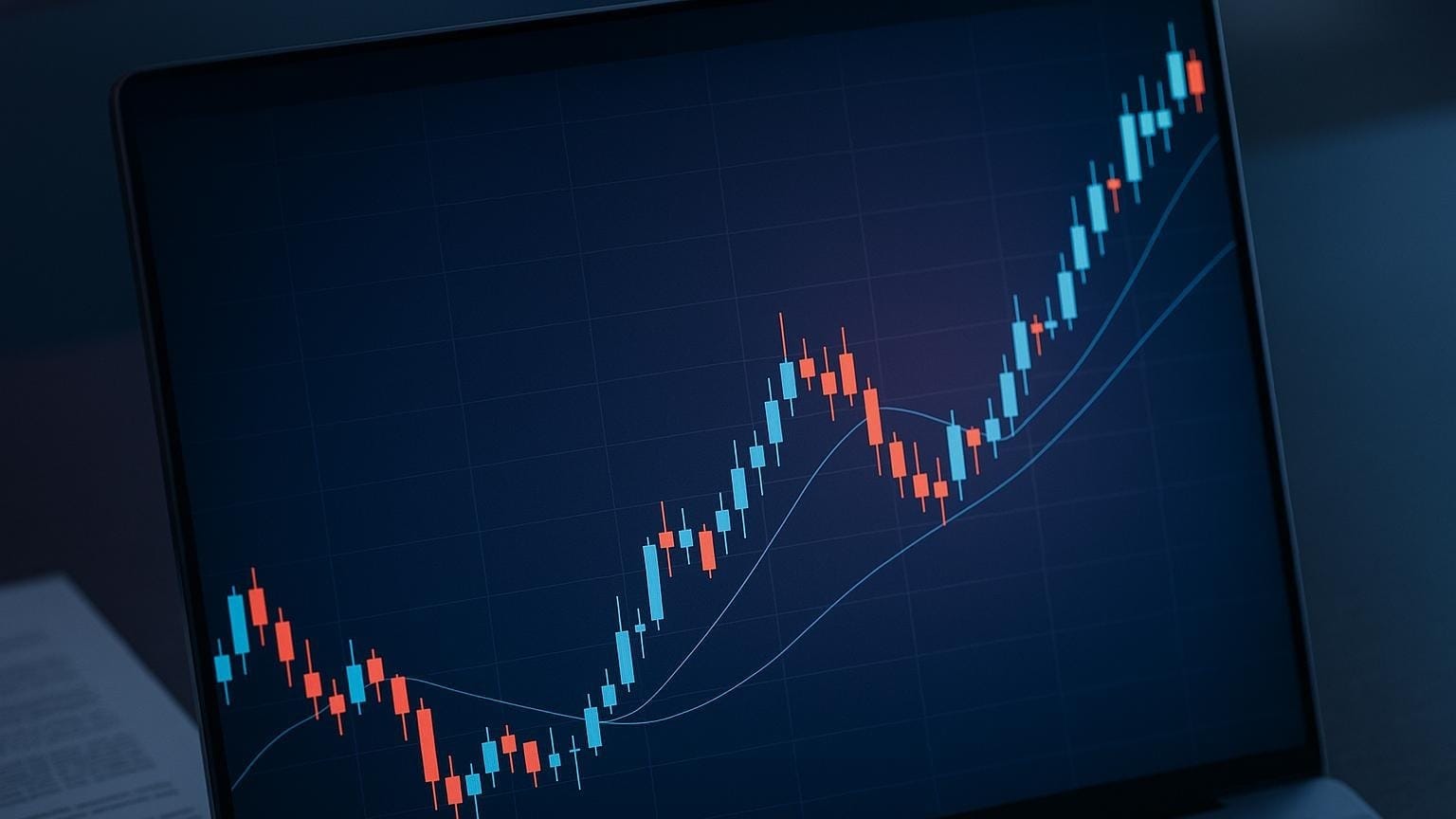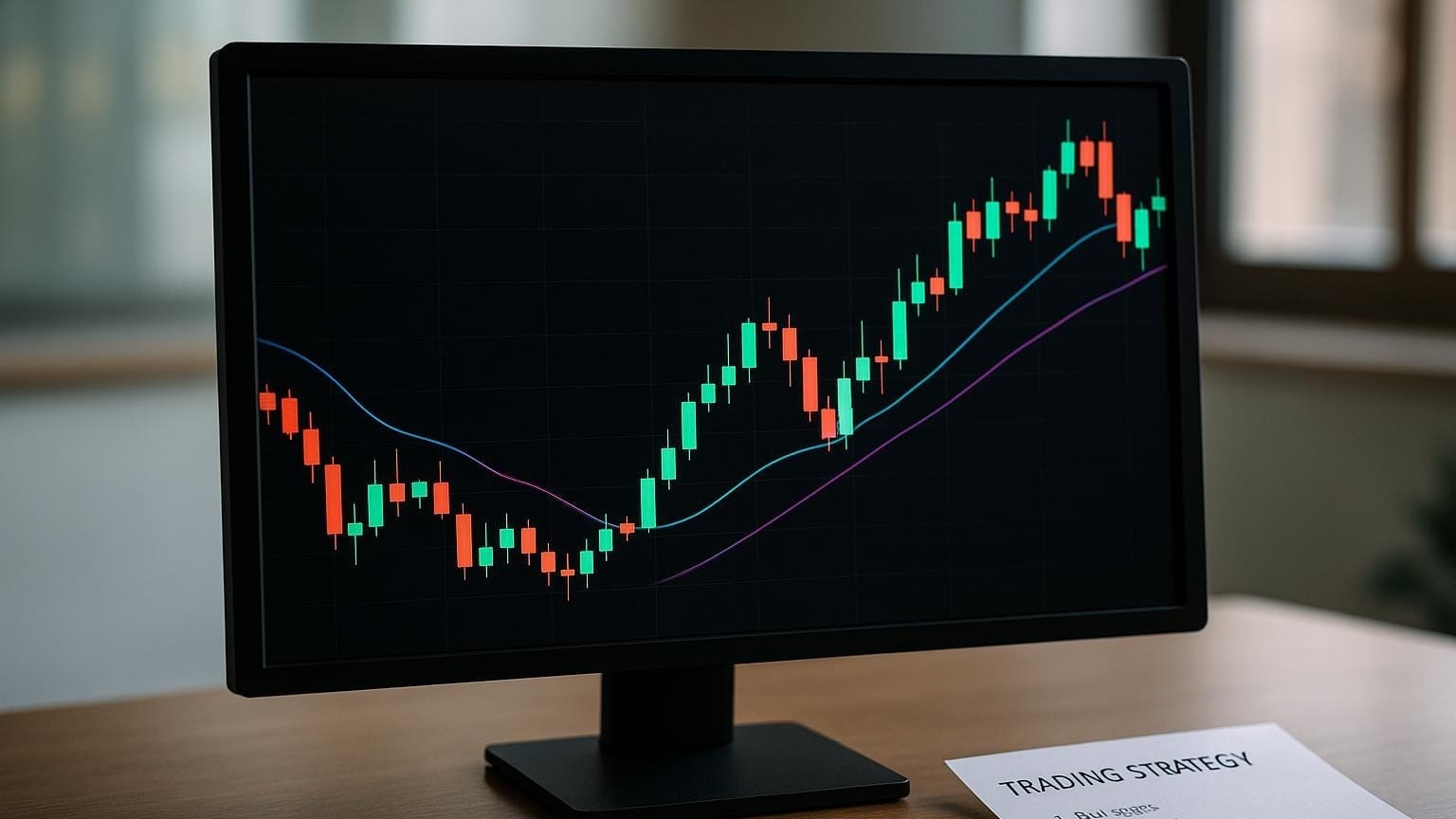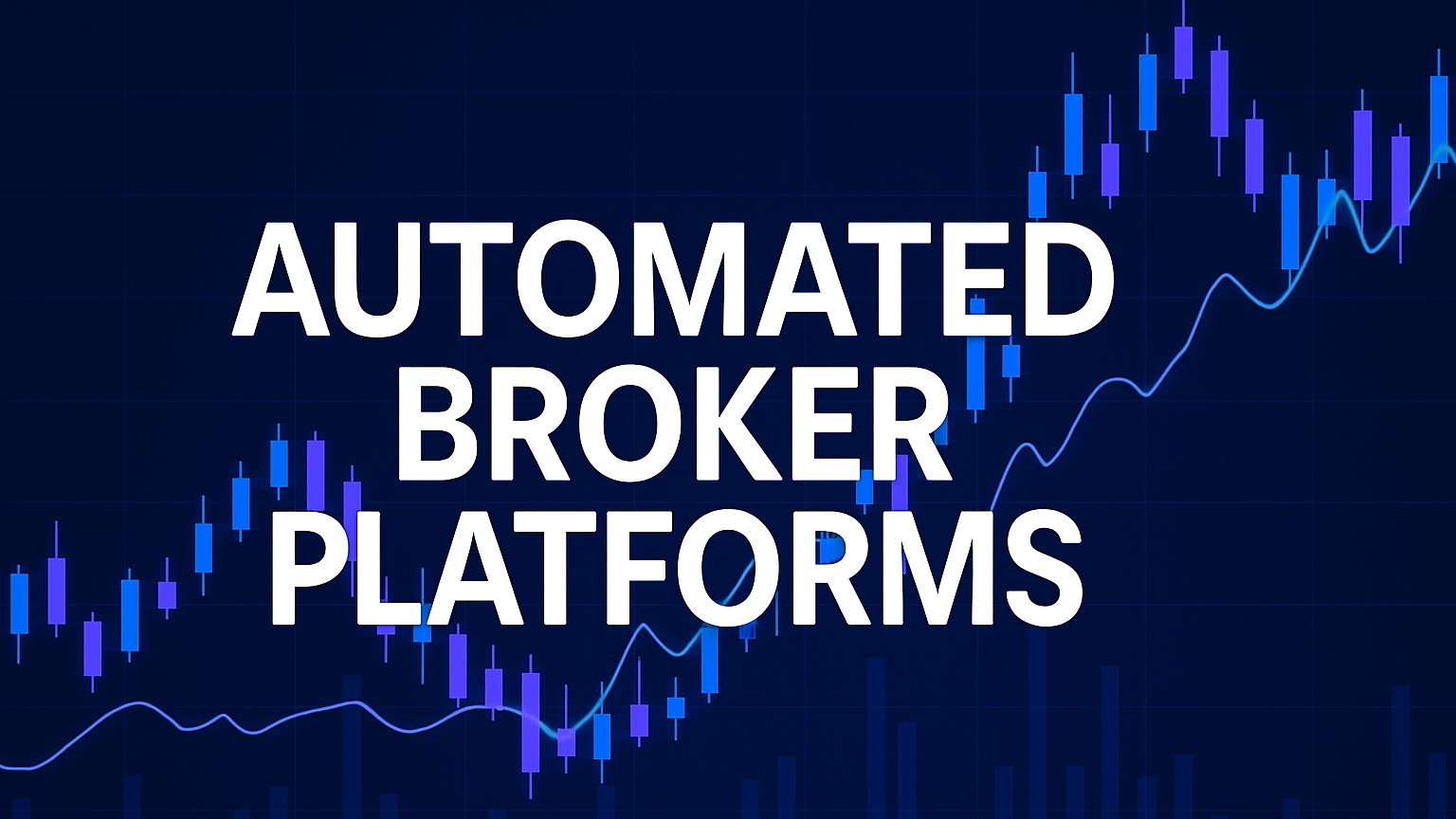Explore essential insights on algorithmic trading, including programming skills, risk management, and data quality for successful strategies.
Algorithmic trading (or algo trading) automates trades using pre-set rules and advanced technology. It offers speed and efficiency but comes with risks like programming errors or market volatility. Here's what you need to know to get started:
Key Takeaways:
- Learn Programming: Master Python for beginners or C++ for high-frequency trading.
- Choose the Right Platform: Options like TradeStation, Interactive Brokers, or QuantConnect cater to different needs.
- Test Your Strategy: Backtest with historical data and monitor metrics like the Sharpe Ratio.
- Manage Risk: Follow the 2 percent rule, set stop-losses, and keep drawdowns under 25 percent.
- Prioritize Data Quality: Use reliable sources and validate data to avoid costly errors.
Quick Comparison:
| Aspect | Why It Matters |
|---|---|
| Programming Skills | Essential for building algorithms |
| Platform Selection | Impacts speed, data quality, and tools |
| Strategy Testing | Validates performance before live trading |
| Risk Management | Protects capital from unexpected losses |
| Data Quality | Ensures accurate decisions and reliability |
Start small, test thoroughly, and focus on consistent improvement to succeed in algo trading.
What is Algorithmic Trading & How to Get Started
1. Required Programming Skills
Programming is a must-have skill for algorithmic trading, though the specific requirements depend on your objectives. Building custom strategies often requires more advanced coding knowledge.
| Language | Best For | Key Strengths |
|---|---|---|
| Python | Beginners and data analysis | Simple to learn, rich library ecosystem |
| C++ | High-frequency trading | Exceptional execution speed |
| Java | Complex trading systems | Good mix of speed and flexibility |
| C# | Backend operations | Efficient memory management |
The table highlights the strengths of popular programming languages. Python stands out for its simplicity and extensive library support, making it the top choice for more than half of algo-trading developers, particularly in data analysis. Richard Hickling from ProfitView explains:
“With Python, if you have an idea, you can just sit down and test it in the space of a few minutes… But for really large projects, Python doesn’t have that much advantage because at scale, you have to put lots of controls on your architecture that become cumbersome with Python.”
For high-frequency trading, C++ remains unmatched:
“C++’s value is that it is both expressive and high performance. There are few languages that rival it in that way.”
If you’re just starting, try these practical steps:
- Use beginner-friendly platforms: Tools like uTrade Algos provide drag-and-drop interfaces and pre-built templates to simplify the process.
- Focus on Python: It’s perfect for beginners and offers a vast range of trading libraries.
- Progress to advanced languages: Once you’re comfortable, explore C++ or Java for better performance and handling of complex systems.
While programming is critical, don’t overlook the importance of understanding market structures, statistical methods, and risk management. These skills form the backbone of creating effective trading strategies.
2. Selecting Your Trading Platform
Once you’ve honed your programming skills, the next step is choosing a trading platform that aligns with your strategy. The platform you pick can impact everything from execution speed to data quality and overall trading performance.
Here’s a quick comparison of some well-known platforms:
| Platform | Best For | Key Features |
|---|---|---|
| TradeStation | Advanced traders | EasyLanguage, extensive backtesting |
| Interactive Brokers | Professional algo traders | Robust API and global reach |
| QuantConnect | Python or C++ developers | Cloud-based environment, hosts more than 100 000 algorithms |
| MetaTrader 5 | Forex-focused traders | User-friendly interface |
When deciding on a platform, keep these factors in mind:
- Execution speed and reliability: If you’re into high-frequency trading, low latency is crucial. Platforms like Interactive Brokers excel in this area with efficient order routing and API integration, which is key to avoiding costly delays.
- Data quality and integration: Accurate and reliable market data is essential for making informed decisions. Look for platforms that integrate high-quality data feeds.
- Cost structure: Trading fees can eat into profits, especially if you trade frequently. Even small fee differences add up. Commission-free platforms often make money through spreads—for example, options contracts typically cost between US $0.65 and US $1.00 each.
- Development environment: The platform should support your preferred programming language and offer robust testing tools. QuantConnect, for example, supports Python and C++ and provides access to a large library of algorithms.
- Risk-management tools: Features like automated stop-loss orders, position-sizing calculators, and risk assessments are crucial. Also, ensure the platform is regulated and uses strong encryption to safeguard your investments.
3. Testing and Improving Strategies
After selecting your trading platform, the next step is to validate your strategy through backtesting. This process uses historical market data to test your trading approach without risking real capital.
Key Performance Metrics to Monitor
| Metric | Target Range | Importance |
|---|---|---|
| Sharpe Ratio | > 0.75 | Evaluates returns relative to risk. |
| Drawdown | Keep as low as possible | Estimates potential worst-case losses. |
Steps for Effective Backtesting
- Set clear rules
Define your entry and exit points, as well as risk limits. For example, you can use LuxAlgo’s price-action tools on TradingView to automate trades based on support and resistance levels. - Use reliable historical data
Work with accurate data that includes prices, volumes, and transaction costs so your tests reflect realistic trading conditions. - Avoid over-optimisation
Resist the urge to fine-tune your strategy excessively. Test it across various markets, use out-of-sample data, and limit parameter adjustments. Always account for transaction costs to keep results realistic.
Common Pitfalls in Backtesting
- Overlooking transaction costs.
- Using incomplete or low-quality historical data.
- Ignoring market liquidity.
- Skipping proper risk management.
Refining Your Strategy
With LuxAlgo’s AI Backtesting Assistant, you can fine-tune your approach. Test parameters across different timeframes, evaluate key metrics, and tweak rules based on the outcomes. Validate changes with new data and keep a detailed record of the results.
This continuous cycle of testing, analysing, and adjusting helps you build a trading strategy that can handle real-world conditions.
4. Managing Risk in Auto Trading
Risk management is the backbone of successful algorithmic trading. Without the right precautions, even a solid strategy can lead to heavy losses.
Position-Sizing Basics
Stick to the 2 percent rule—never risk more than 2 percent of your total capital on a single trade.
Stop-Loss Strategies
Stop-loss orders help cap potential losses. Here are a few methods to consider:
| Method | Description | Best Used For |
|---|---|---|
| ATR-Based | Set 3 × Average True Range below entry price | Volatile markets |
| Moving-Average | Use a longer-period moving average (for example, EMA 100) | Trend following |
| Previous Low | Use the prior day’s lowest price as a benchmark | Day trading |
Incorporate one or more of these methods into your algorithm to handle unexpected market shifts.
Managing Maximum Drawdown
Keep your maximum drawdown below 25 percent. Here’s a quick breakdown:
| Risk Metric | Target | Purpose |
|---|---|---|
| Account risk | ≤ 2 percent per trade | Protect capital |
| Max drawdown | < 25 percent | Ensure portfolio stability |
| Position size | 1–2 percent of capital | Spread out risk |
Dynamic Risk Adjustment
“If you don’t bet, you can’t win. If you lose all your chips, you can’t bet.”
Adjust position sizes based on both market conditions and current capital. This flexibility is key to automating effective risk management.
Practical Implementation Tips
Use the ATR indicator to set stop-loss levels that account for market noise while still protecting trades.
“The stop-loss price should be positioned to avoid being affected by market noise, as volatility and noise are interconnected.”
Drawdowns are inevitable—investors face them roughly 75 percent of the time.
Automating Risk Management
Automation ensures your risk strategies are applied consistently. Focus on automating position-size calculations, volatility-based stop-loss adjustments, drawdown monitoring, and exposure tracking. This structured approach strengthens risk control and helps create steadier trading results.
5. Why Data Quality Matters
In algo trading, the accuracy and reliability of data are non-negotiable. Flawed or outdated data can derail even the best strategies.
The Role of Data Accuracy
The 2010 “Flash Crash” showed what can happen when data issues arise. In minutes, major U.S. stock indices plunged about 1 000 points because of faulty automated trades. Ensuring strong data quality helps prevent such costly errors and market chaos.
Accurate and timely data forms the backbone of trading decisions and links directly to effective risk management.
Trusted Data Sources
| Platform | Features | Monthly Cost |
|---|---|---|
| TradingView | Real-time data, advanced charts | US $29.95 |
| Koyfin | Global-equity coverage | US $49.00 |
| Stock Analysis Pro | Comprehensive market data | US $9.99 |
| Seeking Alpha Pro | Advanced analytics | US $299.00 |
What to Look for in Data Quality
- Cross-check data from multiple providers to identify inconsistencies.
- Minimise latency so updates align closely with market events.
- Standardise data formats for seamless integration.
- Confirm that the dataset includes all required information.
Building a Data-Validation Plan
Implementing a robust validation process is key to avoiding trading errors. As the U.S. Securities and Exchange Commission notes, electronic and algorithmic trading are integral to market operations—underscoring the need for thorough data checks.
Real-Time Data Considerations
For the fastest updates, direct exchange feeds are ideal, though they can be expensive. Balance speed with budget constraints when choosing between direct feeds and consolidated data providers.
Tips for Ensuring Data Quality
- Automate validation processes and set up alerts for anomalies.
- Use cleaned historical data for regular backtesting.
- Keep detailed logs to track and address data-quality issues.
Even minor data inaccuracies can lead to significant trading errors.
Conclusion
Algorithmic trading requires careful planning, from learning coding basics to developing effective trading strategies.
Key Components for a Trading Setup
| Component | Minimum Requirement | Recommended |
|---|---|---|
| Internet speed | 100 Mbps | Ethernet connection |
| Initial capital | Per broker requirements | Enough funds for testing |
| Data feed | Level 1 data | Direct exchange feeds |
| Programming skills | Basic Python | Advanced skills such as Python or C++ |
Building Your Knowledge Base
To succeed, invest in education. Programs like QuantInsti’s EPAT provide structured learning opportunities.
Steps to Begin
- Understand market fundamentals to grasp how trading works.
- Learn Python as your primary coding language.
- Pick a reliable trading platform that suits your needs.
- Start with paper trading to test strategies without risking money.
- Move to live trading with a small initial investment.
Prioritise risk management from the start to protect capital.
Risk-Management Tips
- Use clear position-sizing rules.
- Set stop-loss orders to limit potential losses.
- Track performance daily.
- Keep detailed logs of all trades.
- Regularly review and improve strategies.
Staying Ahead in Algorithmic Trading
The field is constantly changing. Stay updated by reading industry news, joining trading communities, attending webinars, and continuously upgrading technical skills.
Success in algorithmic trading takes time and a steady approach. Begin with simple strategies, and as you gain experience, gradually tackle more complex systems. Patience and persistence will pay off as you refine your methods.








